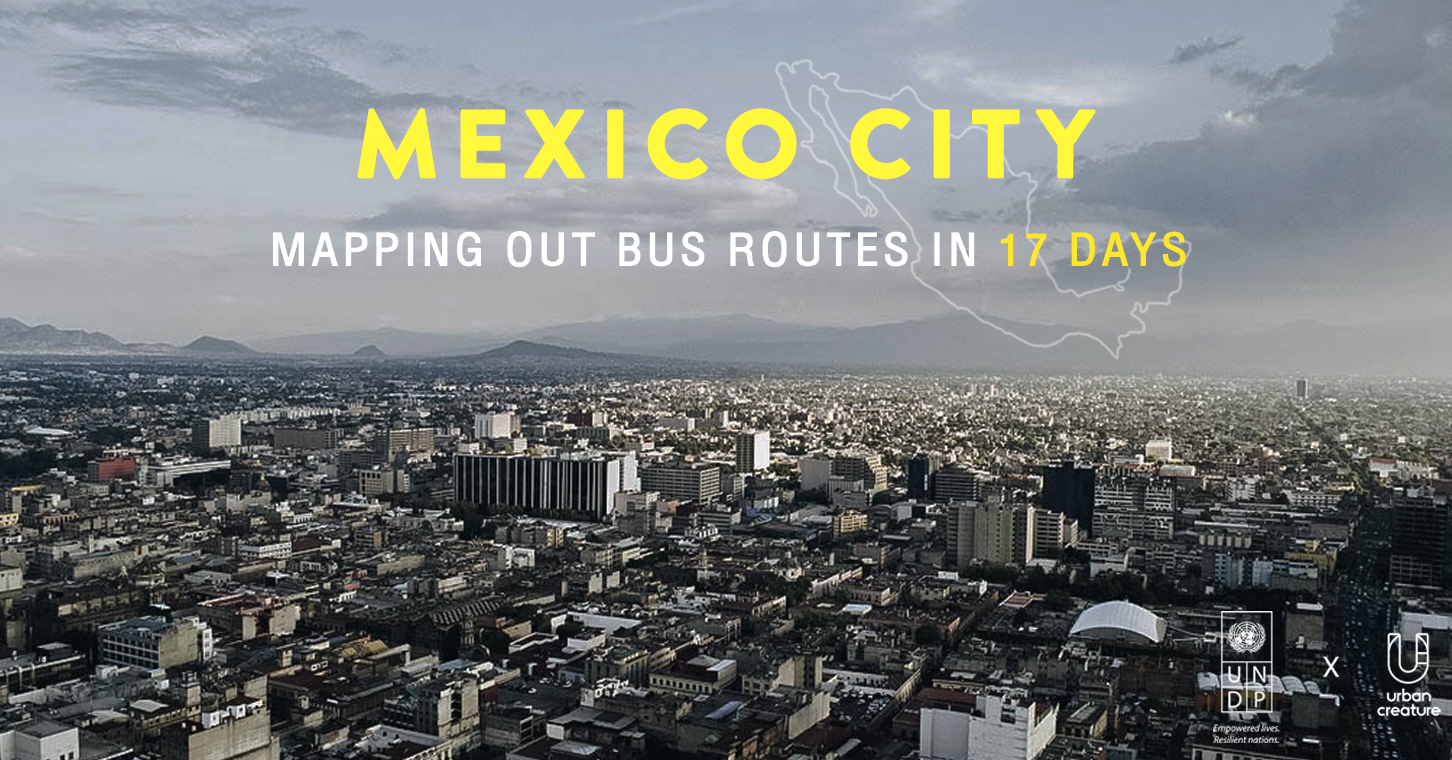- Published Date: 10/09/2019
- by: UNDP
Mapping out bus routes in 17 days: Mexico City’s Experimental Lab

Too Big to Handle
Mexico City, the capital of Mexico, is a diverse place both geographically and socially. It is home to over 22 million people, and more than 50% are under 26 years old.
The city’s population has grown from 3 million to 22 million people in less than 70 years. Because of this, the government had faced many challenges and problems which sometimes are too vast and sometimes are too pressing to manage them all promptly at once. For instance, the increased year-on-year level of corruption and crime rate have lowered people’s trust in their government to merely 30%. Over the years, collaborations between the government and the civil societies for a better Mexico City have barely born any fruit, not even the effort to improve the megacity’s traffic congestion, which is ranked the fourth worst in the world.

New Change, New Approach
But in 2012, the then mayor of Mexico City, Miguel Ángel Mancera, initiated the project titled Laboratorio para la Ciudad, or the Laboratory for the City, that pledged to bring about real change to the city. Appointed to direct the project was Gabriella Gómez-Mont, an artist, film producer and former journalist.
The Laboratory for the City team comprises people of different age groups with diverse specialties and occupations, from artists, graphic designers, policy experts, data analysts, architects, computer engineers, etc. The team’s average age is only 29, also that of Mexico City’s residents.
The Laboratory for the City’s approach to tackling the city’s major problem is making good use of the collaboration between the city dwellers and the government, with the Lab as an intermediary who takes an idea to experiment on before integrating it into policy and law-making. With the support of Mayor Mancera, Gómez-Mont was able to lead her team in experimenting with different solutions and from them formulating a lot of useful data as well as introducing new public policies. On this, she noted:
“One of the most underutilized resources in a place like Mexico City is its citizen power.”

People as a Resource
One outstanding example of utilizing citizen power to solve urban problems through the Lab’s fresh ideas and creative take is Mapatón, a project aimed at organizing more than 1,500 bus routes – which transports over 70% of the city’s 22 million residents daily – that had never been documented and made available for the public. Passengers had to memorize the routes or other passengers when they travelled. For a megalopolis like Mexico City, this was a major problem that could only escalate if left unaddressed.

Mapatón is a gamification application for users to play while travelling by bus. The game asked players to collect locations, i.e. save GPS data to a database, in order to earn points. The further they travelled, the more points they would get. Pictures taken during their ride were used to map out citywide bus routes.
The project produced unexpected results: in a matter of 17 days, Mapatón was downloaded by as many as 3,600 users who helped mapped ours over 2,600 bus routes. That is 48,000 kilometres or the equivalent of a 1.4 trip around the earth!

“This is all thanks to the collaboration between the government, experts and the people.”
With civic participation, Mapatón’s approach was able to reduce budget and time – projected to be up to 400 days – that would have gone into collecting data by one team of people. The time needed was a little over two weeks for developing the application and then for bus users to help map out the routes.
Trust is the Beginning
If the success of Gabriella Gómez-Mont and the Laboratory for the City is any indicator, what we can hope for is a stronger bond of trust between the people and their government. Projects like Mapatón and many more would increase civic engagement as the government-citizen relationship becomes closer, more open and innovative. From now, problems that seem impossible to solve would no longer be so.

Sources :
https://www.frameweb.com/news/spaces-for-innovation-laboratorio-para-la-ciudad
https://g0v.news/laboratorio-para-la-ciudad-re-imagining-mexico-city-through-civic-tech-84272ce8619c?gi=c3bcc4807be2
https://www.urbangateway.org/news/experimental-think-tank-mexico-city
https://www.fastcompany.com/person/gabriella-gomez-mont
http://urbanovacion.com/portfolio-items/closing-ceremony-of-the-first-mapaton-in-cdmx/


